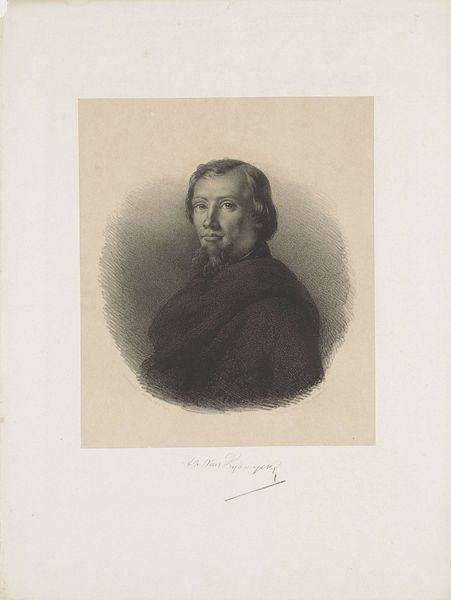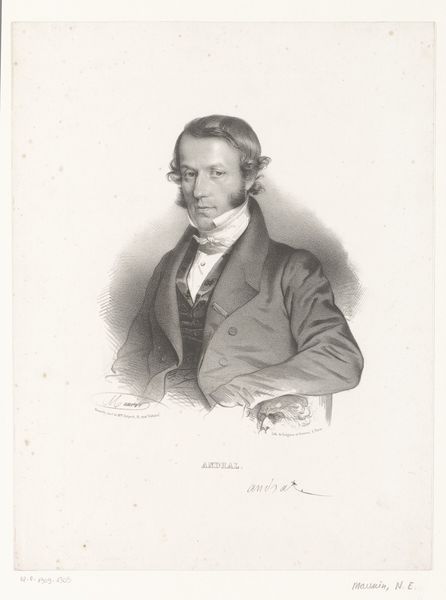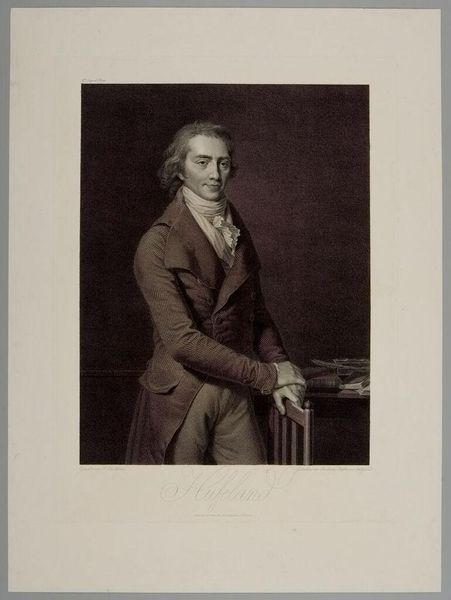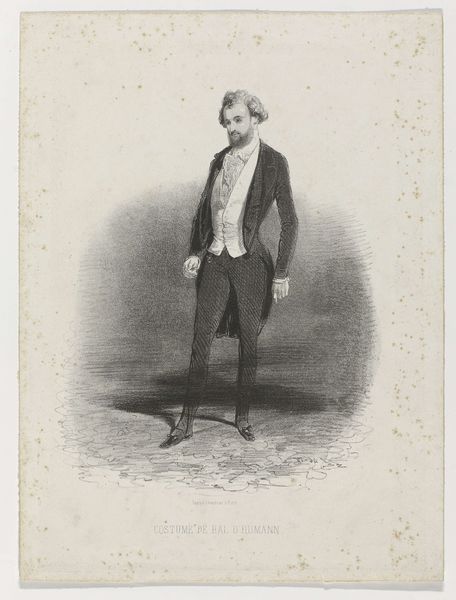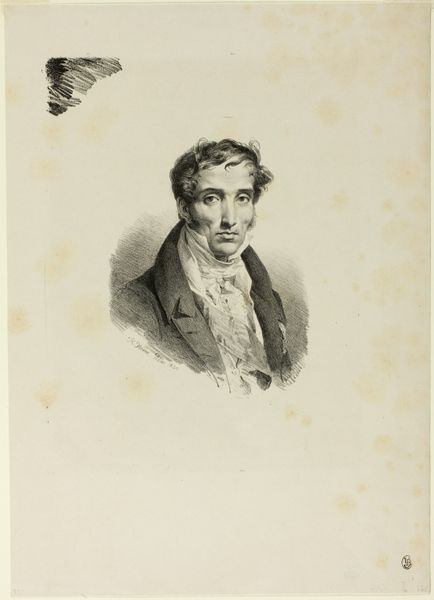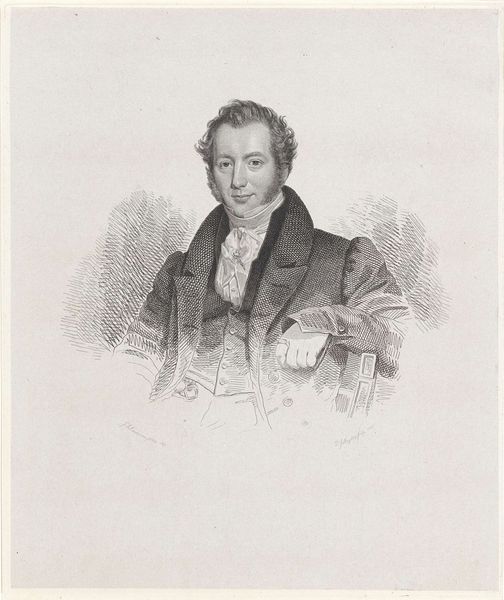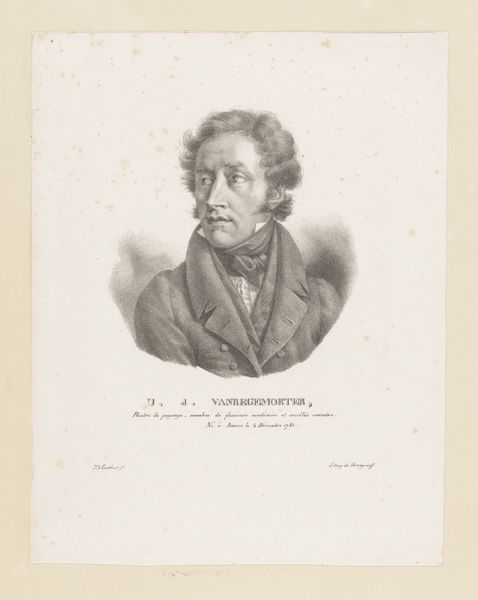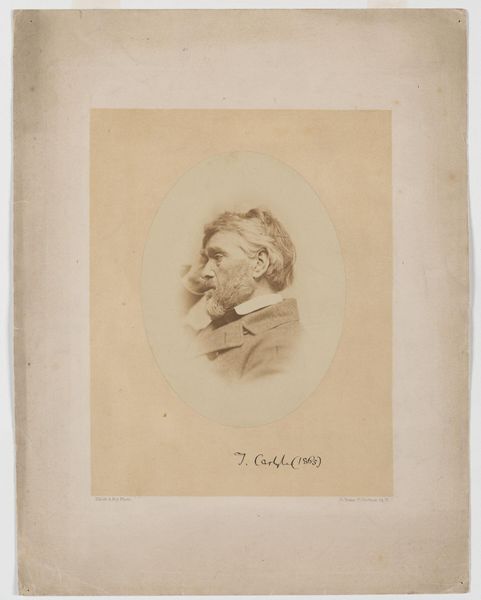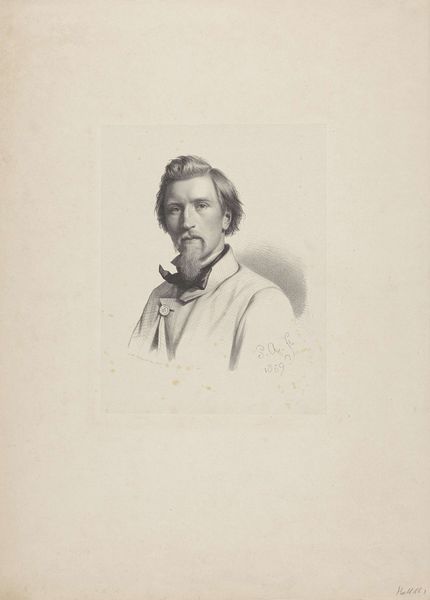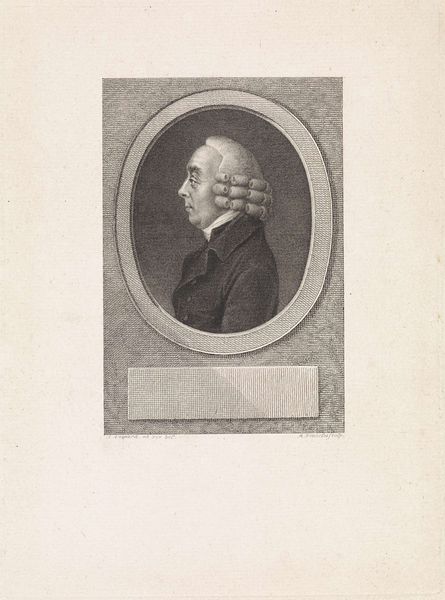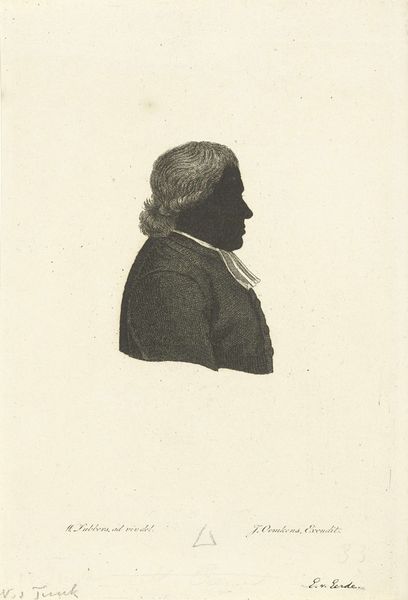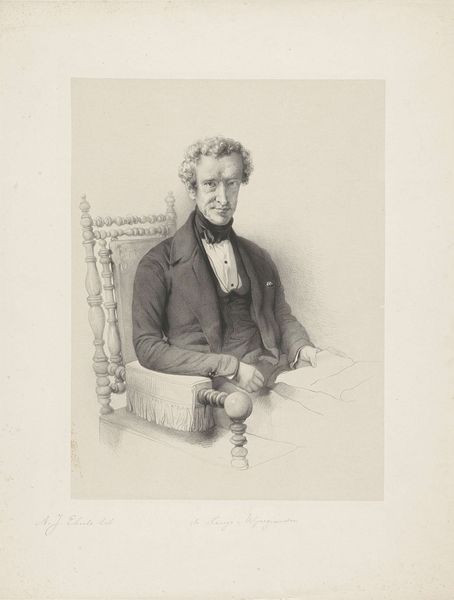
drawing, paper, graphite
#
portrait
#
drawing
#
pencil sketch
#
paper
#
romanticism
#
graphite
#
pencil work
#
realism
Dimensions: height 525 mm, width 427 mm
Copyright: Rijks Museum: Open Domain
Curator: Welcome. We are standing before an exquisite drawing entitled, "Portret van een onbekende man," created around 1850 by Moritz Calisch. It's rendered with graphite and pencil on paper. Editor: Intensely brooding. The gaze confronts you directly, yet there's a hint of melancholy. The monochromatic palette definitely adds to the gravity of the mood. Curator: Observe the compositional choices. Calisch utilizes chiaroscuro quite effectively, focusing illumination on the face while allowing the figure to recede slightly into a soft-focus, almost dissolving at the edges. Editor: It feels as if he's consciously emulating the ideals of Romanticism—that focus on emotion, individualism, and perhaps even a hint of Byronic heroism. Bow, undone—very rakish. The loose tie feels symbolic, suggesting a break from rigid societal expectations, perhaps? Curator: Certainly. The formal structure suggests Romanticism, yes, but within the specific style, one observes a masterful application of graphite. The fineness of line, and the almost photorealistic modeling of facial structure and texture displays a fascinating tension between artistic flair and objective representation. Editor: His clothing seems so meticulously rendered. Each button, each crease, adds a layer to the overall narrative. He seems both fashionable and yet slightly weary, reflective. Is that a wedding ring, perhaps signifying some form of romantic burden? Curator: It very well could be. Ultimately, the identity of the sitter remains a mystery. Yet it provides the groundwork for broader interpretations. Editor: Yes, the enduring power lies in its enigmatic nature. This 'unknown man' embodies an entire era's aesthetic and psychological mood, allowing us a potent connection with that past. Curator: Precisely. Its structural elements, from the carefully controlled gradation of tone to the considered asymmetry of the pose, combine to form a work of enduring aesthetic interest, no matter his identity.
Comments
No comments
Be the first to comment and join the conversation on the ultimate creative platform.
